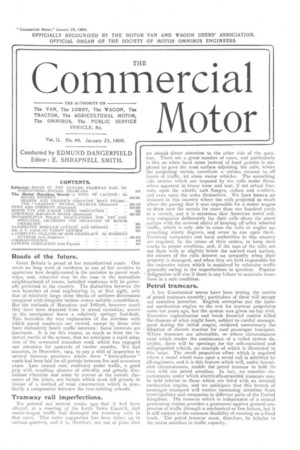Roads of the future.
Page 1

If you've noticed an error in this article please click here to report it so we can fix it.
Great Britain is proud of her macadamised roads. One needs no longterm of residence in any of her counties to appreciate how deeply-rooted is the aversion to paved roadways, and, whatever may be the case in the immediate neighbourhood of towns, metalled roadways will be generally preferred in the country. The distinction between the two branches of road engineering is, at first sight, only that of relatively large stone blocks of uniform dimensions compared with irregular broken stones suitably consolidated. But the methods of Macadam and Telford, however much they have been departed from in actual execution, secure to the omnipotent horse a relatively springy foot-hold. This furnishes the true explanation of the aversion with which paved roadways are viewed, except by those who have exclusively heavy traffic interests : horse interests are dominant. It is for this reason, as much as from the inherent merits of the system, that we anticipate a rapid adoption of the armoured macadam road, which has engaged our attention for upwards of twelve months. We had occasion, in December, 1904, to pay a visit of inspection to several German provinces where these " klein-pilaster " roads had been laid for all periods between five and seventeen years. Low annual Lost, resiliency under traffic, a good grip with resulting absence of side-slip, and greatly diminished vibration and noise by reason of the mosaic character of the joints, are factors which. must tell greatly in favour of a method of road construction which is practically a compromise between the two existing schools.
















